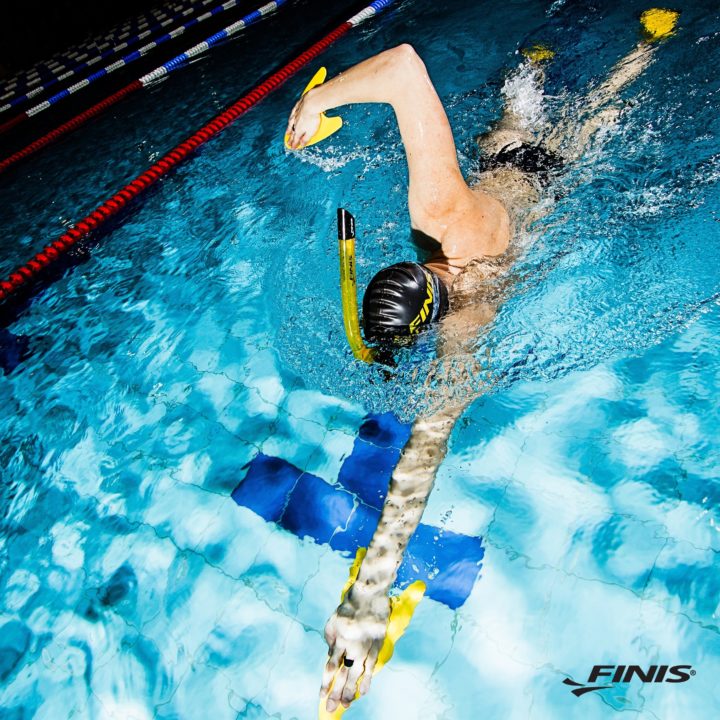There are many different styles of paddles to choose from. The shapes and sizes vary dramatically depending on the brand and by the purpose they are designed to serve. FINIS has gone away from the traditional “garbage can lid” paddles that too often cause injury and a loss of feel for the water. Instead, we stand by the model of products that help to improve the technique of the swimmer who wears them. We have come up with some truly unique and innovative paddles and pulling equipment, and learning a bit more about them can really make a difference in your training this season.

First up are the increasingly popular strapless Agility Hand Paddles. Rather than worry about tightening or replacing elastic bands or straps, the Agility Paddles simply did without them. The paddles help the wearer remain palm positive throughout the pull. If, at any point, the swimmer loses pressure on the hand during the catch, the paddle will jar itself loose and slide off of the palm. Not only is this instant feedback great for learning proper technique, but also allows more experienced swimmers to play with their recovery and early catch position. Coaches also love these paddles because they are extremely easy to throw on and off in between tight interval training.

Next, the Freestyler Hand Paddles were invented by FINIS Vice President, Tim Elson to help increase DPS. The long fin shape and the unique skeg design were taken straight from the large boards seen at the beach, as Tim was a coach at Pepperdine for seventeen years. The narrow shape of the paddle reduces shoulder strain dramatically and allows for the swimmer to fully extend through each stroke cycle. In 2012, the Freestyler Hand Paddle was awarded the Reader’s Choice Best Hand Paddle, by About.com adding to its already stacked résumé.

Another paddle modeled after a renowned coach is the Bolster Paddle. Osprey Aquatics has seen much success in the past few years, thanks to the hard work and ingenuity of their head coach, Brian Bolster. Brian developed this paddle to encourage his swimmers to practice the Early Vertical Forearm (EVF) position that is so critical in all the strokes. By keeping the forearm, wrist, and hand in one plane, the pulling surface grows dramatically and forces the wearer to hold a high elbow position through the pull.

The Fulcrum Hand Paddle is a subtle twist on the hand paddle that many swimmers are used to. Although it is still smaller than conventional paddles, the Fulcrum Paddle has a unique shape that runs down passed the wrist of the user. This encourages, once again, the use of the entire forearm to pull through the catch, which in turn saves the shoulders from overuse and injury.
Not to be confused with the hand paddle, the Forearm Fulcrum serves as an alternative option to an added pulling surface. The Forearm Fulcrum slides over the hand and forearm, locking the wrist in place. When done correctly, the Fulcrum will act almost as an exoskeleton and will require the swimmer to use EVF through all four swimming strokes. Many coaches like to switch between using both at the same time and using one arm at a time. This will give the swimmer great feedback on their catch and does not throw the stroke off, as there is no additional force being applied to the water by the equipment.

As mentioned, there are a number of different hand paddles on the market today. Understanding where they came from and what they accomplish is extremely important to know before you dive in. Do your research in order to avoid injury and to ensure that you have the best possible experience every time you jump into the water. Enjoy Swimming!
For more information on swimming technique and news make sure to check out the FINIS Blog and follow FINIS on Twitter & Facebook
